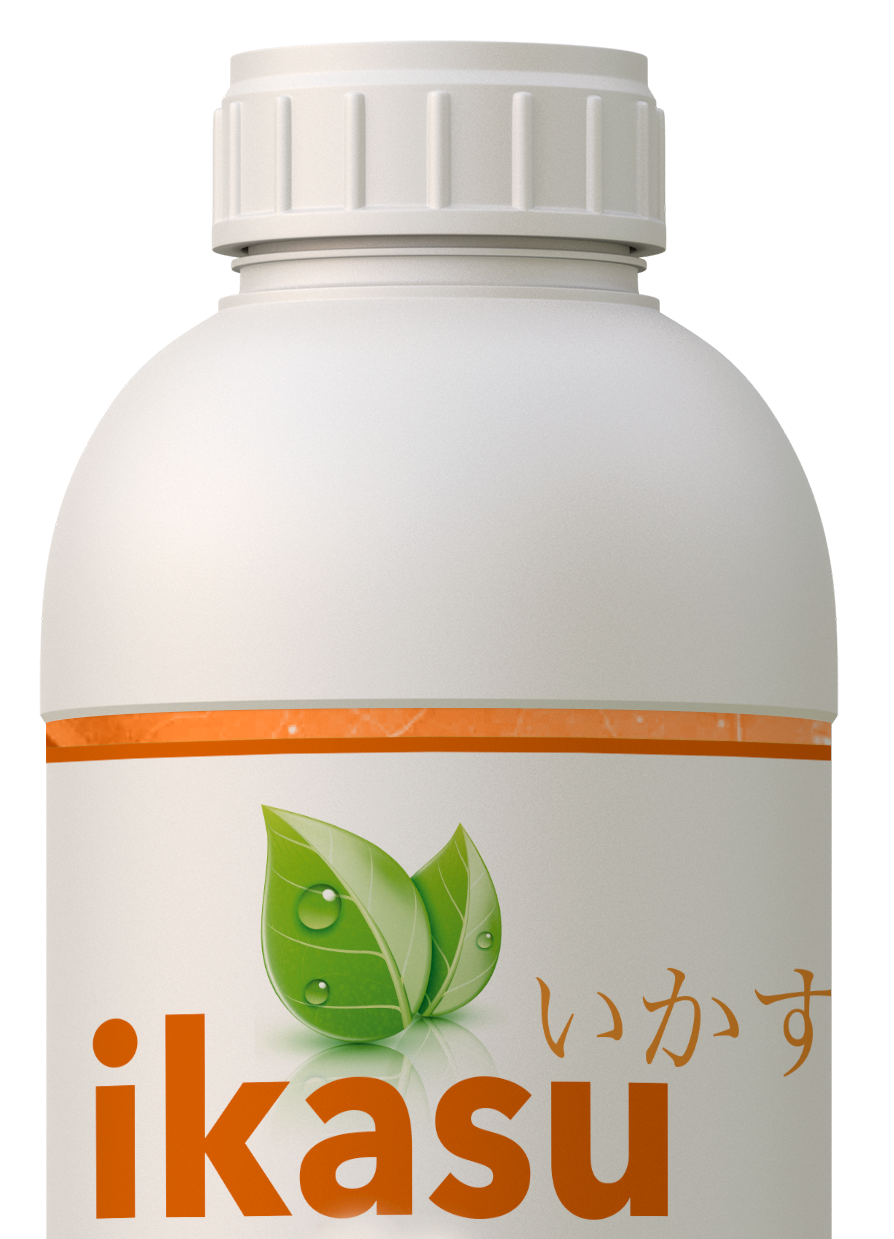
ikasu
Regulator of flowering, fruit set and fattening. It increases the production of natural auxins and enhances the cytoplasmic movement, improving the quality and quantity of the harvest.
Characteristics
Ikasu favors the production of auxins, pollination and cytoplasmic movements, increasing them by 15% on average.
Provides plant resistance to disease by increasing lignin production from cell walls. In turn, it accelerates the curative effects of many fungicides with which it has synergistic effects, advancing the recovery of the plant from the stress produced by this type of treatment.
Phytosanitary product with registration number 22,987
It is based on the mixture of three synthetic nitrophenols, substances that are naturally found in minute proportions in living plant cells, and are characterized by their powerful enzyme-accelerating effect.
Composition
p- Sodium nitrophenolate 0.3 % w / v
o- Sodium nitrophenolate 0.2 % w / v
5- Sodium nitroguayacolato 0.1 % w / v

ikasu effects
Hormonal regulation
Ikasu increases the production of natural auxins and the number of receptors for these auxins, prolonging their stability by inhibiting oxidation, improving their activity and favoring their accumulation in the tissues.

Cytoplasmic movement
Ikasu increases the transport of nutrients, proteins and organelles within the cell by 15%, which favors fattening and the thickness of the pericarp of the fruits.

Pollination and fruit set
Ikasu prevents the premature fall of the flowers, optimizes the growth of the pollen tube, improving the quality of the fruit set and its fruiting.

Cell wall thickness
The active ingredients in ikasu promote plant resistance to disease by increasing lignin production in cell walls, providing cells with greater resistance to fungal infections (Manittto 1981, Stutte 1990, Haga, et al. 1990) .
In tank-mix it enhances and accelerates the effect of fungicides.
Minimizes the effects of biotic stress produced by diseases and fungicidal treatments on plants.

Dose in vegetables
Tomato and Eggplant
Apply 1 liter per hectare, starting the treatments with the first flowers. Repeat every 15-20 days, performing a maximum of 4 treatments per cycle.
Pepper
Apply 1 liter per hectare, starting the treatments with the first flowers. Repeat every 15-20 days, performing a maximum of 5 treatments per cycle.
Melon, Watermelon and Cucumber
Apply 1 liter per hectare, starting the treatments with the first flowers. Repeat every 7-15 days, performing a maximum of 3 treatments per cycle.
Zucchini
Apply 1 liter per hectare, starting the treatments with the first flowers. Repeat every 7 – 15 days, performing a maximum of 4 treatments per cycle.
Dose in grapes
Table grapes
Apply between 0.5 – 0.75 liters per hectare, for volumes of 1,000 – 1,500 liters per hectare, starting the first treatment 10 days before flowering and the second treatment at the appearance of the first flowers, performing a maximum of 2 treatments per cycle.
In fattening treatments it is advisable to apply it in a mixture with gibberellic acid.
Wine grape
Apply between 0.5 – 0.75 liters per hectare, for volumes of 1,000 – 1,500 liters per hectare, starting the first treatment 10 days before flowering and the second treatment at the appearance of the first flowers, performing a maximum of 2 treatments per cycle



